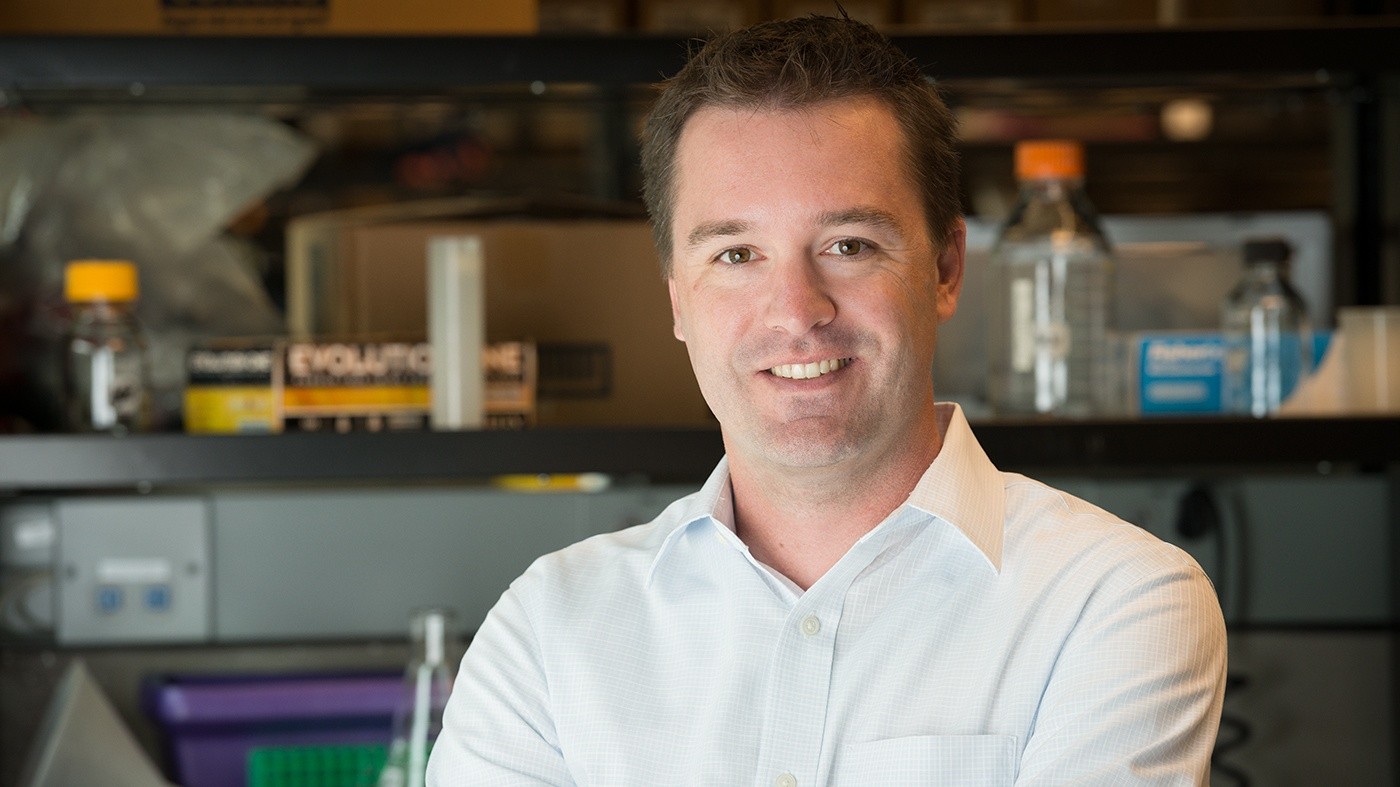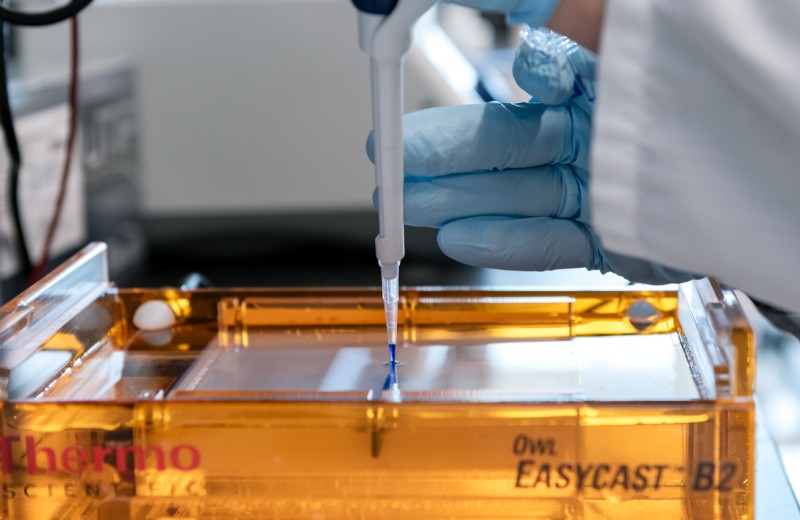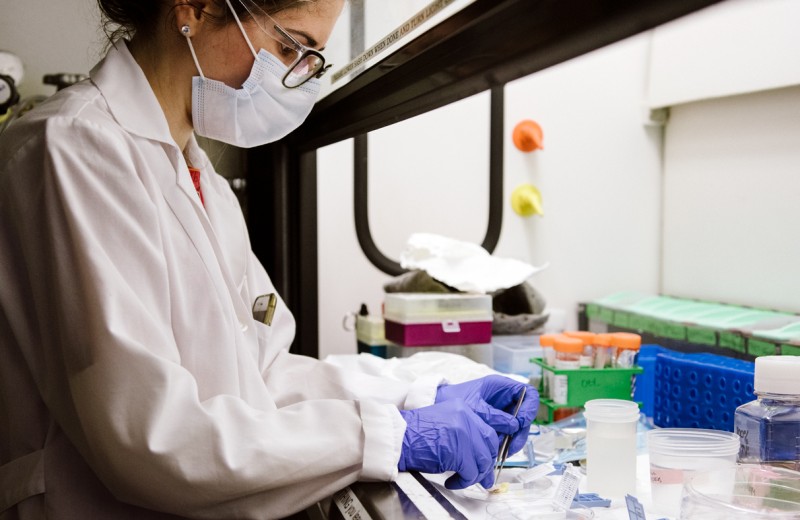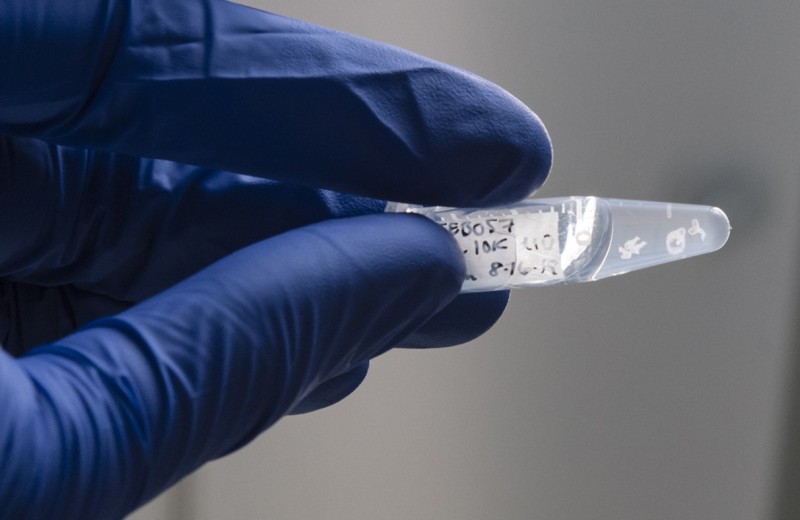Gladstone NOW: The Campaign Join Us on the Journey✕

Gladstone's newest recruit, McDevitt, will continue to use his background in biomedical engineering to improve and accelerate the development of human tissues from stem cells. [Photo: Chris Goodfellow]
The Gladstone Institutes is very pleased to welcome Todd McDevitt, PhD, to the Gladstone Institute for Cardiovascular Disease. McDevitt is the recipient of a prestigious Research Leadership grant from the California Institute for Regenerative Medicine (CIRM), and at Gladstone his lab will work on creating new tissue models from human pluripotent stem cells. Coming from the Georgia Institute of Technology, McDevitt’s expertise in biomedical engineering will be a unique contribution to Gladstone, providing insight into stem cell tissue engineering and how to best leverage this technology into tangible therapeutic options.
Gladstone’s Dana Smith recently spoke with McDevitt about his research and what excites him about coming to San Francisco.
DS: First off, welcome to Gladstone! Tell me, what will you be working on here?
TM: Thanks a lot! My lab is interested in the development of tissue models from human stem cell sources. We make micro-scale tissue “constructs,” or structures, that simulate the function of those tissues. The structures are meant to help with both drug screening in a dish and, eventually, tissue engineering in real patients.
Specifically, we’re focused on stem cell maturation—taking a cell from an immature to a more mature state so that it acts as a better substrate for adult tissue functions. We’re also very interested in what stem cells actually produce and how we can leverage that output for regenerative therapeutic purposes.
Finally, we’ve been very active in developing scalable technologies for cell manufacturing. Right now, stem cell products are commonly produced on a very small scale to use in lab experiments, but we need to make them in much greater orders of magnitude for use in future human therapies. So we want to take some of the amazing fundamental biological discoveries that have been made and start to think about how they can be applied on a larger scale in a commercially viable manner.
What types of cells are you focusing on in the lab?
The three main systems we’re looking at parallel nicely with the work at Gladstone. The cardiomyocyte [heart muscle cell] is one cell type I’ve had an interest in for a while, and it’s what most of my background and training has been in. From the immunology side of things, we’ve become really interested in studying stem cells that can modulate the immune system. And then our newest line of research is relevant to cells in the spinal cord, so I’m especially excited to come to Gladstone and find new collaborators to work with on that project.
Why did you choose to come to Gladstone?
For me, the biggest thing was the quality of the science. When I saw the spectrum of research at Gladstone—cellular reprogramming technologies, developmental biology, chemical biology, genome editing—that was happening in all these top-notch labs, I felt that it was really complementary to what we were doing and that there were immediate opportunities for synergies and collaborations.
What are you hoping to accomplish here?
I want to help take stem cell-based tissues to the next level—to generate technologies that are actually being used by industry and are being implemented for the manufacturing of stem cell-based products. I want to see that become a reality. And there’s really no better place to achieve this than Gladstone. The collaborative environment, the unique assembly of scientific expertise and investigators, and the emphasis and focus on research at Gladstone: these factors enable tremendous innovation.
Will you tell me a bit about your life outside the lab—any special hobbies or interests?
I like to be outdoors, especially hiking, running, and playing soccer. Another thing my wife, Megan, and I like to do is cook and go out to restaurants. Megan is a fantastic cook—I’m just the sous-chef—but we’re really looking forward to checking out the restaurant scene in San Francisco and trying all the different foods and wineries out there.
What else are you looking forward to about your move to San Francisco?
We’re really excited about the overall environment—the innovative nature of the place, the entrepreneurial spirit, the level of scientific rigor and quality that exists among researchers at Gladstone and in the Bay Area generally. I anticipate expanding my interactions and collaborations with biotechnology companies, especially those developing cell-based therapies.
It also doesn’t hurt that there’s fantastic quality of life in northern California. Megan and I can’t wait to get out and explore all the different things that the area has to offer, especially the potential for year-round outdoor activity.
Anything you’ll miss about living in Georgia?
My colleagues and the environment at Georgia Tech. I’ve had fantastic colleagues—beyond just work and collaboration, they’re really good personal friends. I’ve benefitted from having tremendous mentors there as well, Bob Nerem in particular. Bob originally recruited me to Georgia Tech; he’s a real legend and true leader for the biomedical engineering field.
Mini-Livers on a Chip
Mini-Livers on a Chip
A new platform designed by Gladstone scientists for studying how the immune system responds to hepatitis C virus could speed the hunt for a vaccine
News Release Research (Publication) Hepatitis C Infectious Disease McDevitt Lab Ott Lab OrganoidsIt Takes Guts to Make a Heart
It Takes Guts to Make a Heart
Gladstone scientists create novel organoids that open new doors for understanding crosstalk between tissues during human development
News Release Research (Publication) Cardiovascular Disease McDevitt Lab OrganoidsHow Do Developing Spinal Cords Choose “Heads” or “Tails”?
How Do Developing Spinal Cords Choose “Heads” or “Tails”?
A new human organoid developed by Gladstone scientists mimics one of the key steps in early embryonic development
News Release Research (Publication) Cardiovascular Disease McDevitt Lab CRISPR/Gene Editing Stem Cells/iPSCs



